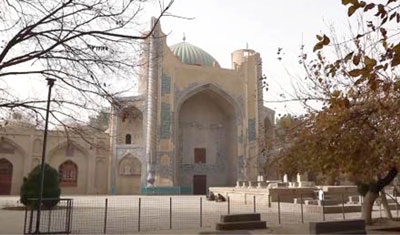The Ministry of Culture and Information is planning to repair the cultural heritage sites that are on the brink of collapse in the northern province of Balkh, an Islamic Emirate official said. The head of the Balkh department of information and culture, Zabiullah Noori, said that they would repair the damaged cultural heritage areas. “The department of information and culture of Balkh in cooperation with some organizations including the Agha Khan Foundation will consider repairing the cultural heritage areas that need it,” he said.
Khwaja Parsa mosque is a historic location in Balkh district of the province. The seminary of Bahāʼ al-Dīn Valad, the father of alāl ad-Dīn Mohammad Balkhi, is another revered historic place located in Balkh district.
Mohammd Saleh Khaliq, a former official of the information and culture ministry, said that there are 120 historic places in the province, 60 of which have been recognized and repaired. “When the tourists come here to see the historic places … they will do some shopping here. All of this will ramp up the economy,” he said.
The majority of these historic heritage areas are located in the Dawlat Abad, Balkh, Dehdadi, and Khulam districts of the province. Provincial residents stress the need for the protection of these historic places. “The people come here for entertainment and to see these historic areas. It should be protected,” said Ahmad, a resident of Kabul.
Meanwhile, Archeologists at the National Museum of Afghanistan are restoring more than 250 artifacts and other historical relics that were badly damaged in 2001 during the Taliban regime.
According to Abdul Baseer Kamjo, the National Museum’s head of Kushan-era relics, the Taliban was responsible for the damage. “The Taliban destroyed these works–saying they are against statues or artifacts–but they didn’t consider that these artifacts remind us of Afghanistan’s past history and culture before the emergence of Islam,” said Kamjo. Archeologists completing the restoration work said that the sculptures were recovered from the Huda area of Jalalabad city in eastern Afghanistan.
“The first step is to identify that all the pieces are similar–that might belong to the same figure–then we put them together. The repairing process is the second step,” said Karimullah Aryan, a restorer. Kamjo said that the destruction of artifacts and other historical relics was done for the same reason that the Buddha statues in Bamiyan were destroyed, referring to the 2001 dictate of then-Taliban leader Mullah Mohammad Omar to blow up ancient Buddha statues—each over 100 feet tall–carved into the side of a mountain in the central highlands of Afghanistan.—Agencies










